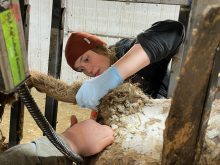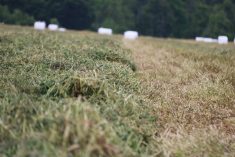PONOKA, Alta. — Since 2010, prairie bison producers have contributed information to a benchmarking study to assess their industry. More are invited to join when the project resumes this year.
The information is also useful when profiling the business for lenders and people interested in investing in a bison operation.
Benchmarking the bison business shows producers how well they are doing in comparison with others, and the information can be used to improve practices and assist financing, investment and decision making, said Gerard Woynarski, a Saskatchewan based consultant who has worked on benchmarking projects for the industry since 2010.
Read Also

Feds propose overhaul of chronic wasting disease control program
Chronic Wasting disease control program getting updated by Canadian Food Inspection Agency with feedback encouraged from producers.
The first assessment was conducted in 2011 and involved 19 producers from Alberta, Saskatchewan and Manitoba.
The fifth project, which was conducted last year, talked with 48 participants. More money has been received to extend the project.
It is not worth comparing bison to the beef sector, even if bankers are more familiar with that industry, Woynarski said at the March 19 Wild Rose Bison Sale in Ponoka.
Actual numbers on a range of costs and profits from producers should be adequate for lenders, he added.
“That is the sell we have to do for the financial institutions,” he said.
“You don’t want to cloud it by comparing it to another industry. It is apples and oranges.”
Those interested in participating in the next round need to provide information such as herd size, animal weights, calving percentages, feed use and cost, fencing, water supplies and an estimated value of the breeding herd. All individual information is confidential.
Farms are broken down into cow-calf, backgrounders and finishing operations. For example, the results from 13 farms over a five-year average period with 100 animals or less found that calving rates were 88.5 percent. Weaning weights for bulls were 487 pounds while heifers were 438 lb. The average days from birth to wean was 289. Death rates were less than two percent.
The average net return per cow was $183 and capital costs per head were $3,167.
Wild Rose bison sale results
- Top seller at the sale was the grand champion male from Irish Creek Bison of Vermilion, Alta. It sold for $13,250 to Nathan and Amanda Scott and Don and Paulette Scott, owners of Beldon Bison Ranch of Nipawin, Sask.
- The reserve grand champion was the entry of XY Bison owned by Bill and Fay Bouffioux of Fort St. John, B.C. It sold for $6,500 to Roger Van Haren of Lacombe, Alta.
- The grand champion female was the entry of Frontier Farms, owned by the Van Haren family. It sold for $4,500 to Morrin Corner Bison, which is owned by Art and Kandice Grenville of Morrin, Alta.
Bison Producers of Alberta president Roger Van Haren said the industry is seeing strong demand for live animals and meat across North America.
However, Van Haren said many herds are on the mature side with 17- to 20-year-old cows.
“We are hoping people will rejuvenate their herds with younger animals.”
















